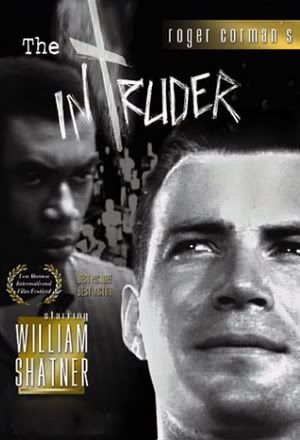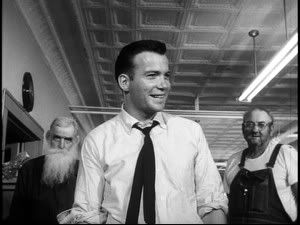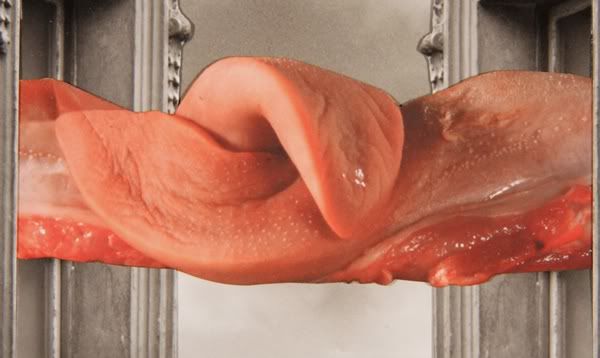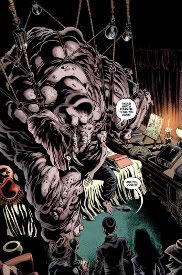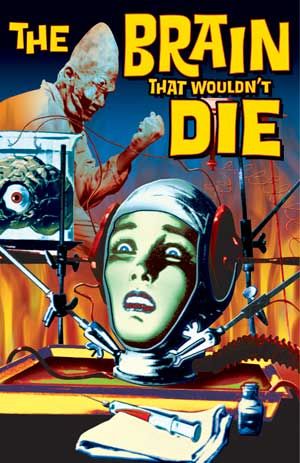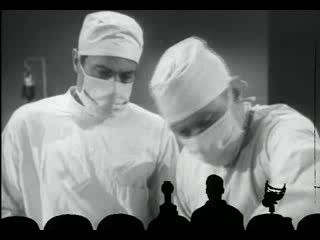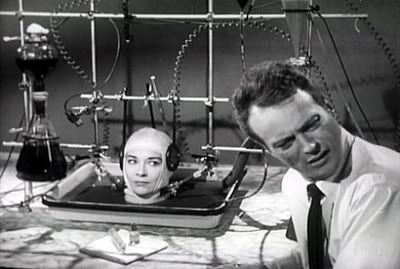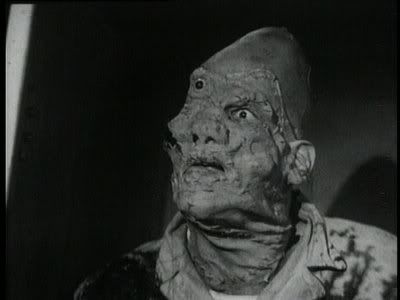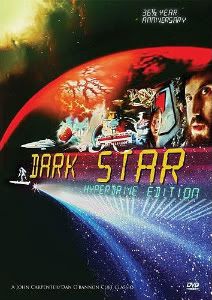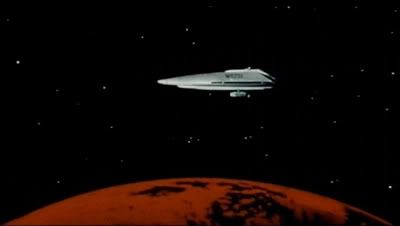11/17/10
Roger Corman's The Intruder: The Culture of Fear Now vs. Then
The Intruder (aka Shame) (1962)
Directed by: Roger Corman
Written by: Charles Beaumont (from his novel)
After a few annoying mishaps with a scratched DVD, I was finally able to watch Roger Corman's excellent film The Intruder for the first time. Corman is obviously recognized for his important contributions to independent and especially super low budget filmmaking as a successful producer of over 300 films. He is also an accomplished director, helming 50 of his own films, including his gorgeous takes on Edgar Allen Poe classic tales like The Masque of Red Death and The Pit and the Pendulum. Lesser known is The Intruder, an intense social commentary on the turbulent fight for the equal treatment of black citizens. The backdrop of Corman's film is the struggle for integration in America's schools in the 60's. The Intruder has the unfortunate distinction of being the only Corman film to lose money, though it ranks as one of his best efforts. Shot in crisp black and white, it surpasses most films of a similar theme with its stunning cinematography and uncompromising take on the subject.
I was surprised by what an intense film experience The Intruder turned out to be. Even being a seasoned viewer of some very brutal films, I winced a few times at just how provocatively Corman's film displayed ignorance, racism, and senseless violence. This is no watered down, sappy ending Oscar hopeful by any means. It was clearly made to show the shocking and depressing reality of bigotry and racism in our country, as well as the violence seething underneath. The film is as timely as ever, and while we may have shifted our bigotry to accomodate the needs of the time, it is quite clear that the seeds of hate are easily planted and nurtured with heaping helpings of fear with a sly smile.
William Shatner shines as opportunistic racist Adam Cramer, newly arrived via bus to a small town in Missouri. A likeable fellow, he introduces himself to various folks as a "reformist". From the get go, he prods the townsfolk to gauge their feelings about integration, equal rights, and the black citizens in general. To his delight, he finds that most of the population harbor prejudice of some sort, and are strictly against the integration about to take place in their own town. Cramer, full of polish and confidence, quickly seduces the daughter of local press man Tom McDaniel (Frank Maxwell), as well as Vi, the wife of travelling salesman Sam Griffin. Cramer's charisma carries him to incite mob violence in a town torn between their own inherint racism and the law of the land. He positions himself in the ranks of those in power, and finds it very easy to manipulate the entire town to get what he wants. Once the wheels are set in motion, Cramer receives resistance from McDaniel who proves a constant thorn in Cramer's side. McDaniel is rewarded for his outspokeness with a terrible beating at the hands of some of the more mean-spirited good ole boys. Cramer employs the help of the KKK to push the town over into chaos, culminating in a near lynching of an innocent black student.
It's a crime that The Intruder isn't more recognized and respected in the film world. Corman put up his own money to make this serious and thoughtful political film only to have it relegated as an afterthought in his career. It's quite a potent piece of work and is certainly due for a revival, especially as our country is stirred into a frenzy by any number of nutjobs out preaching hate against immigrants, the gay community, or anyone else deemed "different" or "scary".
The Intruder Trailer
11/15/10
Nightjack: The Advantages of Multiple Personality Disorder in Fighting Off Assassins
Nightjack (2010)
Author: Tom Piccirilli
Publisher: Crossroad Press
Tom Piccirilli Official Site
188 pp
Review Author: Chris Hallock
Like the chameleon altering its paint job to deal with stress or to fool predators, humans are equipped with their own coping camouflage. Each of us is capable of adapting to most reasonable situations by simply adjusting our personality to suit the moment. It's a survival technique that allows us to shape ourselves in response to a variety of people and environments. But what if we had the ability to summon from within a completely disparate personality to deal with a seemingly insurmountable challenge or trauma? Say it was a challenge we’d normally be ill-equipped or even totally incapable of tackling. Yet, this deep-seeded personality, almost an alter-ego, somehow possessed all the skill to deal with it swiftly and effectively.
This is the concept explored by Tom Piccirilli (Shadow Season, The Night Class) in his latest novel Nightjack, a sort of film noir influenced crime thriller by way of some mind-bending Matt Ruff or Philip K. Dick notions of multiple personality, the effects of mind altering drugs, and how those factors might help or hinder you in battling would-be assassins. Piccirilli has crafted a page turner that satisfies those looking for a little cerebral workout with their violent action. At a very trim 188 pages, there is never a dull moment, but there is also enough depth to keep one intellectually engaged.
William Pacella is a patient at the Garden Falls Psychiatric Facility in New York. His memory is in tatters due to the unorthodox treatments and drugs he's received under the care of Dr. Maureen Brandt. He suffers from multiple personality disorder, ending up in the hospital on his own accord, though he has no recollection of admitting himself. He receives flashes of memory revealing that his wife, Jane, was killed in a fire, possibly murdered by a gang of thugs under the direction of crime boss Joe Ganucci. Now driven by revenge, further complications arise when Pacella discovers he houses numerous personalities, referred to on occasion as “alternatives”. The more volatile alternatives may be responsible for his recent violent outbursts in the hospital. His "split" is theorized to be caused by the extreme stress and grief of witnessing his wife's death. Everything is exacerbated by the alternative’s desire for autonomy and Pacella’s own personal vendetta.
The problem faced by our protagonist is that while he does harbor a number of useful split personalities, he doesn't have much control once one has been activated. In fact, the bulk of the narrative focuses more on Pace, one of Pacella's more dominant personalities. Pace’s role is akin to something like a custodian of Pacella’s body while Pacella himself has retreated somewhere within. Pacella regresses to an almost dream state of flashbacks and memories when a personality is called up, becoming disassociated and depersonalized while the alternative takes over. Pace, on the other hand, seems to act as caretaker, an “In-Between Man”, keeping the more dangerous ones at bay and generally keeping things from crashing. He somehow has the unique ability to communicate with the alternates, cooperating with the more amiable to piece together the puzzle. Unfortunately, when the full power of an alternative is unleashed, Pace/Pacella has little power to stop the machine in motion. They are often unaware a change has taken place until presented with evidence of the aftermath. In those moments of fugue, the personalities have a tendency to deal in sudden violence or worse. The biggest offender is Jack, also known as "Nightjack", a bloodthirsty and impetuous killer with a passion for knives. Keeping Jack under control has proven the most difficult task for Pace, and one getting increasingly more difficult.
With hesitation on the part of Dr. Brandt, we find Pacella about to be released from her care to live a "normal" life on the outside. The hospital has a home and job lined up for him at a nearby fish cannery. Boredom, loneliness, television, and strict prohibitions are his only forseeable future. That is until he and Dr. Brandt are taken by a group of former Garden Falls patients. They have plans for Pace, and hope he can shed light on harassment from Alexander Kaltzas, a vengeful shipping tycoon. Kaltzas believes the group is responsible for the brutal rape of his daughter Cassandra while she, too, was a patient at the hospital. The group look toward Pace as leader or father figure to guide them. They make it no secret that they wish to utilize Jack and a number of Pace's other personalities to survive the ordeal. Once a chain of events are set in motion, they travel together to Greece for a confrontation with the mysterious and deadly Kaltzas.
It would be impossible for me to spell out much more in a simple synopsis, and I don't want to give much more away than I have already. The story gets increasingly layered and complex as we are introduced to a myriad of characters, most of whom also have multiple personalities. There's the intelligent and ruthless Hayden; Pia, who uses her sexual allure like a spider trapping its prey; and Faust, the spiritual one with the angels Rimmen and Sariel balancing on his shoulders. Dr. Brandt may be harboring her own secret agenda. Then there is the cast of Pacella's personalities, including the psychotic Jack, Sam the resourceful private dick, and Irish boxer Jimmy Boyd, to name but a few. Fortunately, each character is quite distinct, and it never feels frustrating to keep up with them all.
I enjoyed Nightjack quite a bit. It’s a tightly wound, perfectly paced, and fascinating story that explores the effects of trauma and how it can be channeled into something constructive, destructive, or both. Piccirilli never lets things get confusing in terms of timelines. When he jumps from reality to memory flashbacks, it is very clear where we are in the moment. The same can be said for alternating between the personalities of each character. It would have been very easy to let the story get bogged down by these frequent changes, but Piccirilli allows us to adapt in our own way to the ever tightening evolution of the book. What at first appears as a straightforward narrative about sanity vs. insanity soon turns into a treatise on the power and fragility of the mind.
11/12/10
My Double Feature for this Weekend: The Intruder and Eating Raoul
I'll be spending a little time this weekend catching up with some cult favorites that have somehow eluded me in my life. I decided to make a double feature of it, which is always a great way to spend a weekend afternoon or evening. Luckily, my local library is well-stocked in a number of great classics, and I was easily able to locate DVD copies of both films.
First up is Roger Corman's critically acclaimed commentary on racism, 1962's The Intruder. Starring William Shatner, the film follows the expoits of racist "reformer" Adam Cramer as he attempts to thwart de-segretation in schools in a small southern town. I'm a huge fan of Corman's Poe adaptations, and it will be great to see what he does here with something that is completely opposite of those old horror classics.
The Intruder Trailer
First up is Roger Corman's critically acclaimed commentary on racism, 1962's The Intruder. Starring William Shatner, the film follows the expoits of racist "reformer" Adam Cramer as he attempts to thwart de-segretation in schools in a small southern town. I'm a huge fan of Corman's Poe adaptations, and it will be great to see what he does here with something that is completely opposite of those old horror classics.
The Intruder Trailer
THE INTRUDER: Movie Trailer. Watch more top selected videos about: Movie Trailers, The Intruder (1962 film)
Next Up: Riding the coattails of John Waters-inspired outrageous suburban/urban dark comedy is Paul Bartel's 1982 cult hit Eating Raoul. In this bizzare film, a couple discover a way to raise money to increase their social "status" by killing swingers in their apartment building. The film starts Bartel along with Mary Waronov (Night of the Comet, House of the Devil) as boring, but murderous couple Paul and Mary Bland.
Eating Raoul Trailer
Next Up: Riding the coattails of John Waters-inspired outrageous suburban/urban dark comedy is Paul Bartel's 1982 cult hit Eating Raoul. In this bizzare film, a couple discover a way to raise money to increase their social "status" by killing swingers in their apartment building. The film starts Bartel along with Mary Waronov (Night of the Comet, House of the Devil) as boring, but murderous couple Paul and Mary Bland.
Eating Raoul Trailer
11/10/10
New Jan Svankmajer Film Surviving Life (Theory and Practice)
Surviving Life (Theory and Practice) (2010)
Written and Directed by: Jan Svankmajer
I Just wanted to take a minute to express my excitement for a new Jan Svankmajer film. If I can pinpoint one filmmaker who has inspired me the most over the years, it would be the Czech animator and director. Svankmajer has been responsible for many superbly imaginative films that deftly combine live action with stop-motion animation, offering a surreal look at the oddities of life and the frailty of humanity. All of my cinematic heroes are getting older, and with very few taking their place, I'm more than appreciative to have another effort from Svankmajer even if he claims it'll be his last.
Anyone who hasn't had an opportunity to see wonderful works like Alice, Little Otik, Lunacy, or any number of amazing shorts should be sure to seek those out. Surviving Life (Theory and Practice) will no doubt follow suit as a dark comedy that explores dreams and human nature utilizing a striking mix of cut out animation and live action.
Here's a synopsis of the film from the Czech Film Center:
Eugene leads a double life – one real, the other in his dreams. In real life he has a wife called Milada; in his dreams he has a young girlfriend called Eugenia. Sensing that these dreams have some deeper meaning, he goes to see a psychoanalyst, Dr. Holubova, who interprets them for him. Gradually we learn that Eugene lost his parents at a tender age and was brought up in an orphanage. Apart from the lovely Eugenia and her little boy Peter, another figure appears regularly in his dreams – a filthy old woman who keeps warning him not to harm Eugenia. In another he is confronted by a man called Milan, who claims to be Eugenia’s husband and little Peter’s father, and tries to extort money from him. By now Eugenia is expecting Eugene’s child – to the dismay of Dr. Holubova, who believes Eugenia is in fact his anima. And getting your anima pregnant is worse than incest. Meanwhile Milada suspects Eugene is having an affair and starts following him. She confronts Holubova, assuming she is the other woman, and instead learns all about her husband’s double life. In another dream, Eugene accidentally causes Milan’s death during an argument. Milada spies on Eugene’s ritual in the studio, then copies it to gain access to his dream-world. Finding Eugenia, she tells her of Eugene’s bigamy. Both women are devastated. In his studio Eugene is amazed to find an old photograph of Eugenia with little Peter and Milan. He tracks down the photographer who used to work there, who sheds light on what really happened to his parents…
Surviving Life (Theory and Practice) Trailer
11/9/10
Brace Yourselves for Gaspar Noe's Enter the Void
Gaspar Noe's Enter the Void Starts at Kendall Square Cinema on Friday, November 12.
There's really no way to take the work of Gaspar Noe other than as the film equivalent of blunt head trauma. From his start with provocative short films like Came and Sodomites, nihilistic, yet thoughtful features like I Stand Alone, to the hyper-real assault on the senses of the brutal Irreversible, Noe has been delivering gut-punching, uncompromising visions of humanity torn asunder by drugs, self-centeredness, confusion, and self-loathing. Never a pleasant experience, the films, however, leave the viewer feeling a little different about his or her perspective on truth and reality, as well as questioning the disguised, repressed nature of people.
After a successful run in the festival circuit, his latest film Enter the Void, is making its way across the U.S. in limited screenings across the country. The Boston area is lucky enough to have a screening at the Kendall Square Cinema in Cambridge starting November 12.
Enter the Void has been universally revered as a mind-altering experience that pushes the boundaries of even Noe. If you feel able to endure it, don't miss it on the big screen for the full effect.
Enter the Void Trailer
11/8/10
Not Quite Hollywood: Australians Throw Around Blood, Boobs, and Fiery Autos Like No One's Business
Not Quite Hollywood: The Wild, Untold Story of Ozploitation! (2008)
Written and Directed by Mark Hartley
Over the past few years there have been a number of solid documentaries covering the gamut of exploitation films. Films like American Grindhouse and Nightmares in Red, White and Blue provided really good introductions to their respective subjects, but have been criticized for merely grazing the surface by more experienced fans. Anyone looking for an introduction would certainly get an education. However, if you're already well-versed in horror and exploitation, you may just find yourself feeling a little unchallenged.
Along comes Not Quite Hollywood, a catalog of the most infamous Australian softcore porn and adult comedies, horror, and high octane stunt-heavy action films from down under. If you're looking for a collection of more obscure and lesser know films and filmmakers, well, this is your place. Not Quite Hollywood covers a lot of ground, and includes profiles of many of Australia's best underground filmmakers, actors, and stunt people. The film covers a few of the more well-known offerings like Mad Max (and director George Miller) and Walkabout, but where it excels is bringing the viewer the full range of exploitation films from the nastiest, to the most outrageous, to the most successful. Hartley's film covers Australia's failed attempt at becoming a sought after area for major productions and the mechanics behind just why things didn't work out. Rising from the failure was an entire generation of totally fearless and reckless filmmakers that captured the quirkiness of Australian culture, dressed it up with gore, nudity, and car crashes, and unleashed it on an unsuspecting world.
The Man from Hong Kong
The film contains interviews with iconic figures in film such as Quentin Tarantino, Stacey Keach, Jamie Lee Curtis, Dennis Hopper, and cinematographer John Seale. In addition to the Hollywood folks, Hartley speaks with the pioneers of Ozploitation such as filmmakers Brian Trenchard-Smith and the prolific David Hemmings. Each provide their own entertaining, heartbreaking, or mind boggling take on the best and worst aspects of Ozploitation, with Tarantino displaying a particularly enthusiastic stance on the subject. What's clear from all of them is that making a movie in Australia is a good bit saucier than anywhere else, especially considering the possiblitity that imminent death loomed over their heads during most productions. The productions were just as wild and lawless as the terrains, environments, and characters captured on film.
Turkey Shoot
Not Quite Hollywood operates in three distinct cagetories: "Ockers, Knockers, Pubes and Tubes”, “Comatose Killers and Outback Thrillers”, and “High Octane Disasters and Kung Fu Masters". A lot of the films discussed might only be recognized by the most seasoned of fans and I found myself making a big list of films to seek out. I was happy to find a few old favorites referenced in the mix, such as Razorback, Strange Behavior, The Long Weekend, Dead End Drive-In, and Road Games. Despite recognizing of a number of films, I won't lie and say that this documentary didn't school me. I definitely made a huge list of films to seek out. Each category is covered well, and one never feels the subject has been glossed over.
Mad Dog Morgan
The standout portion of Hartley's film is the introduction to the absolutely insane stunt men who risked life and limb to pull off some crazy stunts. I mean, some of the stunts shown in the documentary are among the most outrageous I've ever seen and I can't even believe they were survived. When you witness Grant Page's truly death-definying stunt work, it's quite an exhiliration. Hartley's documentary is an incredible collection of some of the most dangerous car crashes and stunts captured on celluloid. The total recklessness most productions was probably the main reason they pulled them off so successfully. Without these rebellious pioneers Australia would likely have languished. Instead, the generation portrayed in the documentary has inspired a new generation of up-and-coming filmmakers and Australia is one again experiencing a resurgence in worldwide interest in their special brand of filmmaking.
Not Quite Hollywood Trailer
11/6/10
Billy the Kid returns for more of Eric Powell's Tales of Old Timey Oddities
Billy the Kid's Old Timey Oddities
Written by: Eric Powell
Art by: Kyle Hotz
Published by: Dark Horse Comics
I feel bad for anyone who isn't familiar with Eric Powell. If you've never cracked open an issue or trade collection of The Goon, then you, my friend, are missing out on one of the best comics ever produced. The Goon could mistakenly be labeled "just a horror comic", but it's much more than that. Beneath the gore, zombies, gross swamp monsters, and gangsters, there's a lot of heart and understated humor. It successfully blends that humor and horror with some fantastic artwork by Powell.
Powell doesn't spread himself too thin, concentrating on fewer titles that are all the more potent for it. He has contributed to Hellboy, has a great new monster horror comic with a carnival theme entitled Chimchanga, and the Buzzard mini-series, a character spin-off from the universe of The Goon. Any one of these makes for some entertaining reading on a weekend afternoon.
He is now revisiting the gang from his eccentric comic Billy the Kid's Old Timey Oddities in a new 4-issue mini-series that takes place in Victorian era London during the terror campaign of Spring Heeled Jack, ask Jack the Ripper. Peppered throughout the story are recognizable figures from the literature of the time period, all done with Powell's trademark darkly humorous spin. Most notable in the first issue is the appearance of a certain John Merrick, who you may also know as the Elephant Man. Here, Merrick takes the form of an intelligent, thoughtful, but grotesque monstrosity with loads of patience for Billy the Kid's antics.
Powell continues his trend of great anti-heroes. Billy the Kid is gruff and rude, but still endearing in the way that only Powell's characters can be. Kyle Hotz's striking art ties everything together with strong lines and cool shadowing that really captures the feel of London's underworld. I urge you to pick up this and the older series, as well as any other books you may have overlooked in the Powell canon. Tell 'em Dwight T. Albatross sent ya.
Powell continues his trend of great anti-heroes. Billy the Kid is gruff and rude, but still endearing in the way that only Powell's characters can be. Kyle Hotz's striking art ties everything together with strong lines and cool shadowing that really captures the feel of London's underworld. I urge you to pick up this and the older series, as well as any other books you may have overlooked in the Powell canon. Tell 'em Dwight T. Albatross sent ya.
11/5/10
First Movie Memories: The Brain That Wouldn't Die
The Brain That Wouldn't Die (1962)
Directed by: Joseph Green
Written by: Rex Carlton
I get all weepy with nostalgia a lot, and I think it's because I miss Saturday afternoons when I was a kid flipping through the TV with my buddy Dave. Dave and I grew up watching all sorts of great stuff on cable, and especially shows like Commander USA's Groovy Movies. That's essentially how we got our film education. If it wasn't incredibly nice out, you could always find us sacked out in front of Dave's mom's floor model TV with wonky speakers, huge bowl of popcorn in our laps, and gigantic plastic cups of Mountain Dew at the ready. Dave is gone now, but those Saturdays were among my favorite times in my life.
Even earlier than that, I remember being just past toddler age and catching movies with my dad on Pittsburgh's Chilly Billy's Chiller Theater. Chilly Billy was more amusing than scary to me, but I adored him and looked forward to watching "that scary guy" every week. I'm pretty sure my dad limited the type of programming to the 50's sci-fi/horror stuff, as well as the giant monster flicks, but occasionally something more intense would slip through. Those really were the days that cemented my love of bizarre, subversive, horrifying, challenging, and violent films.
With all those memories bumping around, I do know that my first official movie memory, one that is very prominent in my mind, was the 1962 classic schlocker The Brain That Wouldn't Die.
A lot of people are familiar with The Brain That Wouldn't Die when it was chosen for roasting on an episode of Mystery Science Theater 3000. I don't know if that episode is seen as one of the better in the series, but MST3K is entertaining even when they're a little off their game.
Anyway, I remember being pretty scared of the mutant guy in Brain, but completely transfixed by Jan Compton's disembodied head. Frankly, the story is pretty grim even though the campiness undercuts it. For a long time I was absolutely terrified of riding in the car because I didn't want to be decapitated and kept alive on some dude's lab table.
For anyone who's been deprived of this classic, the basic premise involves a scientist named Dr. Cortner (Jason Evers) who revives his decapitated girlfriend Jan's (Virginia Leith) head and keeps her holed up in his lab. She just wants to die, but Cortner can't let her go, plus he wants his little experiment to be a success, of course. Cortner starts looking for a replacement body for Jan and resorts to murder and kidnapping.
For some reason, there's a mutant in the lab, and Jan can communicate with it telepathically. She uses it to help her get revenge on the doc in a fiery climax.
Sure, The Brain That Wouldn't Die is kinda awful in that endearing way a lot of 50's/early 60's movies can be. It's still a nice way to spend an afternoon with a few of your snarkiest friends. Despite some hilarity, it's quite a pretty morbid little flick. Maybe I just have a special attachment to it glossed over by my old friend nostalgia.
You can watch the entire movie here if you want:
11/4/10
Dark Star Hyperdrive Edition: You Know, Alien is a Remake of Dark Star, Right?
Dark Star (1974)
Written by: John Carpenter and Dan O’Bannon
Directed by: John Carpenter
After a hilarious and bittersweet crawl written by Mr. Dan O’Bannon at the start of VCI Entertainment’s Hyperdrive Edition of Dark Star (releasing on Oct 26), I was stricken all over by the fact that we’ll never have another film by this amazingly talented renaissance man. Just realizing all the hats he wore not only on this production, but many of his other iconic works, made me realize just what a loss we’ve suffered with his recent passing. It’s with a heavy heart I once again revisit an old favorite.
Paying respect to O’Bannon and his first brilliant film (the directorial debut of fellow icon John Carpenter) on its 36 1/2 year anniversary, VCI Entertainment has unleashed a monstrous Dark Star DVD. The attentive folks at VCI have put together an impressive collection of interviews, documentaries, and other assorted features and treats to go along with a full digital restoration of Dark Star’s 35mm transfer, and man, does it look swell. Lifelong fans of Dark Star such as myself will remember many murky VHS editions that dulled the flashy colors of the film. Now, we’re able to fully appreciate the explosion of color and light that permeates with lush red, green, and blue tones. We’re finally able to experience the asteroid storm to its full effect. When planets are blown up, we are awash in the fiery debris. The soundtrack, featuring John Carpenter’s electrifying score and the various bloops, bleeps, whooshes, and alien screams of the sound design have also been digitally enhanced for a very well-rounded viewing experience.
The product of budding USC film students John Carpenter and Dan O’Bannon, Dark Star is a romp of a science fiction action movie. However, I wouldn’t quite call it a parody. It is clearly a funny film, but taken with the utmost seriousness for the genre and audience. Sure, it has many of the usual goofiness of ultra low budget films, but there’s something endearing about the entire thing that the viewer can forgive a little shaky acting and “thrifty” set pieces.
We are on a journey through the deepest of deep space with the crew of Dark Star, the scout ship housing the Advanced Exploration Corps who travel through space to eradicate “unstable planets” using an arsenal of intelligent bombs. The crew consists of daydreaming surfer Pinback, Lt. “don’t give me intelligent life, give me something to blow up” Doolittle, laser targeting obsessed Boiler, loner Talby, and the dead, cryogenically frozen Commander Powell, a motley team of space travelers, each dealing with their own issues in the confined space of the Dark Star. Having been on their mission for many years, they each have their own ways of dealing with boredom while staving off outright space madness. There’s a hitch in the mission when their computer begins malfunctioning, a dangerous alien escapes from confinement, and they must deal with Thermostellar Bomb #20, a bomb that mistakes itself for god.
Despite the limitations of an extremely small budget, Dark Star triumphs as a science fiction film that can stand toe-to-toe against films with many times its budget. The innovation of the crew and special effects artists pushes it beyond just being a goofy sci-fi flick and into territory where the audience can really be wowed by the images on display. It’s a testament to the visual and special effects teams supervised by Dan O’Bannon that the film still stands up with some impressive visuals. It’s really quite fascinating to see what they accomplished on spare change and elbow grease, particularly after the insight from the making-of featurettes. Making a beach ball menacing is no easy feat, after all.
All in all, Dark Star is an intelligent, funny, and yes, thought-provoking movie produced during an era when mavericks still snuck into buildings to shoot last minute scenes or built sets from junk sitting around the house. There’s a reason why people still seek out Dark Star after all these years. Just wanted to again mention the plethora of great features including the feature length documentary “Let There Be Light”, a 3D animated tour of the Dark Star ship, the original and extended versions of the film, interviews with Brian Narelle, author Alan Dean Foster, and most special of all, Dan O’Bannon’s final interview. With three hours of bonuses and the care put into them, this is one of the essential DVD's of 2010.
Greetings. I've Come to Subjugate You With a New Blog
Well, I've been saying I was going to do it for a while now, but I've finally taken the plunge. Yep, I started a new blog. In the ocean of blogs out there, mine is probably just another pebble of shit on top of the mound, but dammit, I love forcing my opinions on unsuspecting internet surfers. If someone enjoys it and interacts with me about movies, that's swell! If they think I'm just another opinionated hack, well, that's ok, too.
You may know that I write for the horror site All Things Horror Online with my buddy Mike Snoonian. We've been going relatively strong over the past year and it's been a blast so far. We aren't quite where we want to be, but we're getting there. I will still continue writing over there, but here I've decided to tackle some things that aren't really appropriate for a horror site. What I'm saying is, there are a few itches not being scratched and I hope to remedy that here. I may occasionally diverge from that and talk about horror, but my main focus is going to be No Things Horror for the most part.
You see, I'm a film junkie. I watch any and all kinds of movies from the very best to the very worst. It's just what I do and I have been ever since I was probably three years of age. I got hooked immediately watching old monster movies and 50's atomic-age sci-fi and have grown to appreciate all types for films from animation to documentaries to Giallo to experiemental. If I may quote the supremely shitty Aerosmith, "I don't wanna miss a thing". Here in Boston, we have a number of awesome independent theaters that work hard to bring in provocative, original, and best of all, true independent film. I spend a lot of time with my butt planted in their seats, and plan to share reactions to as many of them as I have time.
Before I sink too far in this self-indulgent post, I just wanted to thank my pal Fred McKennon, aka The Rev, over at his diabolical site The Reverend Phantom for his gorgeously colorful design work on my banner. I gave him a concept and he ran with it producing a nice piece in a mere couple of days. Thanks, Rev! I urge you to contact the Rev when you need design work as he has designed many great posters and banners for me.
Please forgive the obvious holes scattered throughout this blog. I'm still working on the design. I haven't even really figured things out yet, so it may look different every time you (hopefully) come back.
So welcome to The DIY Drive-In. In the meantime, gimme some feedback. Thanks for reading!
Subscribe to:
Posts (Atom)

